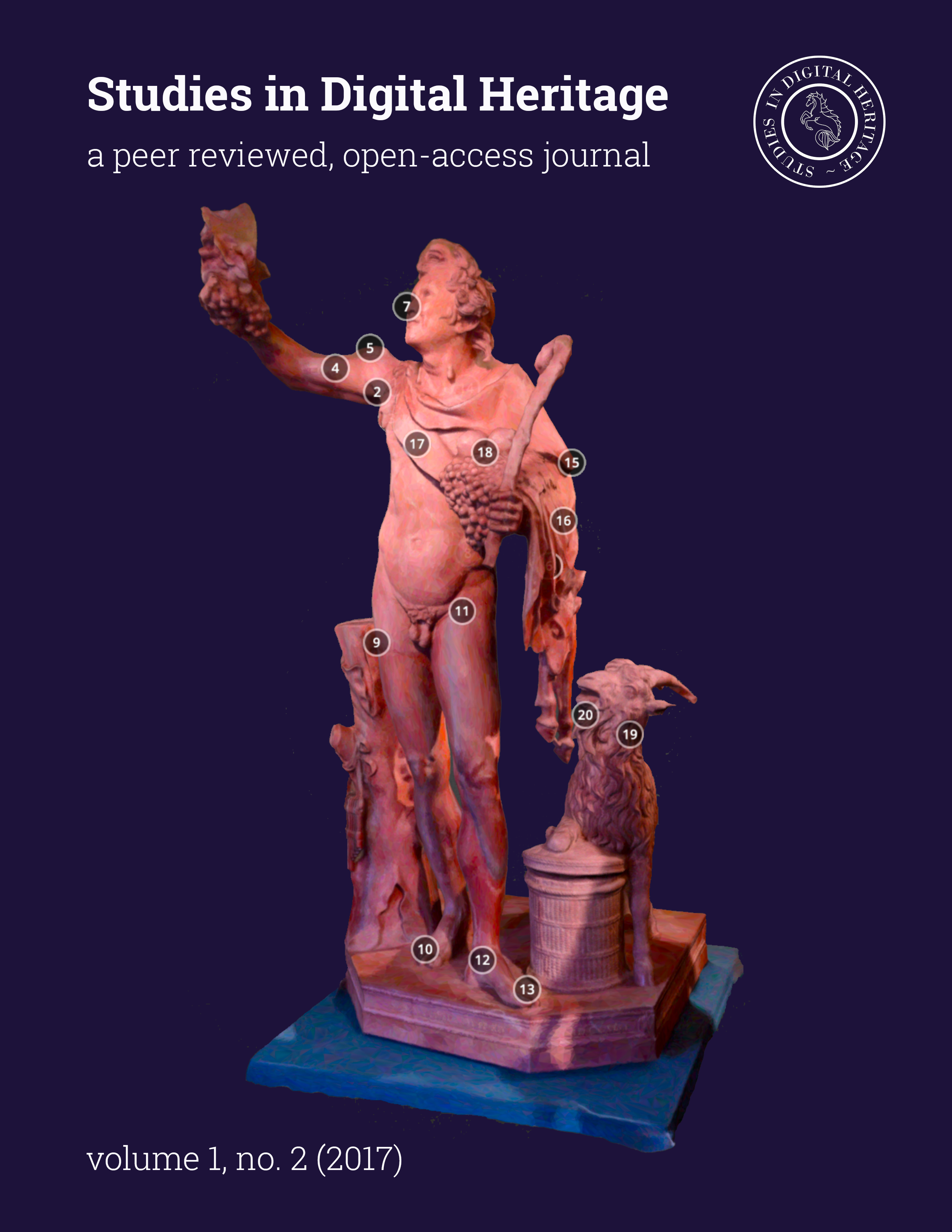Archaeological Excavation and Documentation of Kafir Kala Fortress
Main Article Content
Abstract
Downloads
Article Details
From 18 May 2018, the contents of Studies in Digital Heritage are licensed under a Creative Commons Attribution-NonCommercial 4.0 International License (CC BY-NC 4.0). Our submitting authors pay no fee and retain the copyright to their own work.
How this works: to submit their work to the journal, authors grant Studies in Digital Heritage a nonexclusive license to distribute the work according to a CC BY-NC 4.0 license. Once an article is published, anyone is free to share and adapt its contents—provided only that they do so for noncommercial purposes and properly attribute the shared or adapted information. Details of these terms can be found on the Creative Commons website.
Download SDH’s full author agreement here
Studies in Digital Heritage will insert the following note at the end of any work published in the journal:
© [Year] by the authors. This article is an open-access article distributed under the terms and conditions of the Creative Commons Attribution License CC BY-NC 4.0 (https://creativecommons.org/licenses/by-nc/4.0/).
References
A. Begmatov et al. 2016. Excavations of the Uzbek-Japanese Expedition on the Site of Kafirkala. In International Conference on Archaeology of Uzbekistan during the Years of Independence: Progress and Perspectives. Samarkand. 2016. 116-118.
A. E. Berdimuradov and M. K. Samibaev. 1999. Khram Dzhartepa-II: K problemam kul’turnoj zhizni Sogda v IV-VIII vv. (The temple of Jartepa-II: On the Problems of Cultural Life of Sogd in the 4th8th Centuries). Tashkent.
A. Berdimurodov et al. 2016. Bully s buddijskim sjuzhetom s gorodischa Kafirkala. Arkheologija Uzbekistana 2 (13), 51-60.
S. Cazzoli and C. G. Cereti. 2005. Sealings from Kafir Kala: Preliminary Report. In Ancient Civilizations from Scythia to Syberia, vol. 11. 1-2, 133-164.
R. Dimartino. 2011. Studio analitico della cultura materiale fra VII e IX secolo d.C. nella Regione di Samarcanda (Uzbekistan): analisi morfo-tipologica, produzione e commercio della ceramica di Kafir Kala. Dottorato di Ricerca in Bisanzio ed Eurasia. Universita di Bologna.
F. Grenet and E. de la Vaissière. 2002. The Last Days of Panjikent. Silk Road Art and Archaeology 8, Kamakura, 155-96.
G. V. Grigorjev. 1941: Tali-Barzu kak pamyatnik domusul’manskogo Sogda. Archive of the Institute of History of Material Culture, Russian Academy of Sciences (St. Petersburg), fond 35, opis’ 2, delo 92.
G. V. Grigorjev. K voprosu o khudozhestvennom remesle domusulmanskogo Sogda. KSIIMK, XII, M.L.
Ibn Ḥawqal. 1976. Kitāb Ṣūrat Al-Arḍ. In J. Kramers (ed.) 1967. Bibliotheca Geographorum Arabicorum II, 3rd ed. Leyden.
S. Mantellini and A. Berdimuradov A. 2005. Archaeological Explorations in the Sogdian Fortress of Kafir Kala. In Ancient Civilizations from Scythia to Syberia, vol. 11. 1-2, 107-132.
M. E. Masson. 1928. O mestonakhozhdenii sada Timura Davlet-abad. Izvestija SredneAziatskogo Komiteta. Tashkent, 43-48.
V. A. Nil’sen. 1965. K voprosu o naznachenii sogdiiskogo zdanija okolo Kafir-Kala pod Samarkandom. IMKU 6, 116-123.
G. A. Pugachenkova. 1983. Ishtikhanskie drevnosti (nekotorye itogi issledovanii 1979). Sovetskaja arkheologija, 259-270.
G. V. Shishkina. 1961. Rannesrednevekovaja sel’skaja usad’ba pod Samarkandom. IMKU 2, 192-222.
T. Uno and A. Berdimurodov, eds. 2013. The site of Kala-i Dabusia: Sogdian City along the Silk Road. Archaeological Research of City Centers of Central Asia: Shinyosha.


